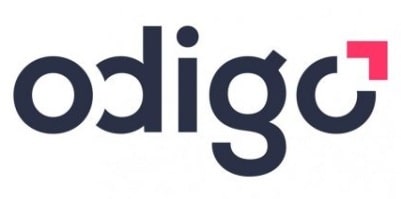Is it time to retire average handling time in Contact Centres? Steve Owens Account Director at Odigo
When customer services can be a differentiator between businesses and there is a strong customer preference to talk about complex queries, is a metric used to set limits on ideal call length still relevant? If spending extra seconds on this crucial channel can translate into greater customer loyalty, is it time to retire this traditional metric?
What is average handling time (AHT) and how is this metric calculated? Handling time is the total time it takes an agent to complete one interaction and be ready for the next one. It is made up of talk time, hold time and wrap-up time.
Average handling time is easy to calculate:
(Total talk time + total hold time + total wrap-up time) / The number of calls
Not only is AHT a universally accessible metric but it tracks closely with cost-per-call and can give an overview of efficiency; small reductions can mean big savings.
Reducing call length by 8 seconds in a contact centre receiving 100,000 calls a month saves 222 hours.
On the face of it, this sounds great but there are 2 key things that contact centres need to be wary of. First, setting arbitrary targets to reduce average handling time and second, assuming that agents are the weak link in the process.
Average handling time is not a success metric
The 2022 ContactBabel report recorded the average cost per call for an inbound interaction as £5.42, with voice ranking as the most expensive channel. When average handling time tracks closely with this cost, it’s easy to see why businesses have in the past jumped to the conclusion that lower was better. But the same report also showed that mean service call duration is now at its highest recorded level, 6m 33s.
Calls are getting longer and more costly; however, this is far from unexpected. Call Centre Management Association data shows that customer preference is highest for live agent interactions on topics of higher complexity or urgency. Self-service is well accepted for what would have been otherwise easy fixes for agents to handle. Therefore a rise in average handling time is to be expected.
The increasing costs per call is also put into perspective when AHT is paired with a success metric like first call resolution (FCR). If longer calls result in higher FCR with lower levels of follow-up interactions, the result can be a lower overall cost. Taking time to connect with customers can also positively influence net promoter scores. This metric actually takes 1st place for importance in the already mentioned ContactBabel report, with 2nd and 3rd place in this ranking going to FCR and speed to answer. Meanwhile, down in 7th place is average handling time. Investing time in customer relationships is a sound business strategy.
So is average handling time relevant at all?
Yes. It’s still important because it’s relevant to operational processes and as part of the bigger picture. If average handling time is measured alongside other outcome metrics then it’s possible to set value-driven benchmarks for performance. For instance, what rate of FCR is possible for certain query types within a given time frame? The specifics and granular detail are important. Lumping all call times together from standard inquiries to more complex ones will not be informative. Averaging averages can gloss over important variables and will rarely create accurate actionable information.
Metrics such as AHT can be used to highlight when agents aren’t performing as well as their peers. This is the key: the value should be used in a comparative sense. Comparison with gold standard service, not bargain basement service focused simply on cost-cutting.
How do you influence a metric like AHT?
It’s not just down to the contact centre agents on a call. Average handling time is the overall product of many different factors and can be influenced even before the agent gets involved. One of the more impactful factors is accurate AI-enhanced call qualification and advanced routing, which means customers can be identified and connected directly with agents who not only have visibility on the reason for their call but the right skills to help. In this way, when the handling time begins and the call connects it is set up for success.
Essentially, information available to the agent influences average handling time and high quality information helps agents meet both customer and performance expectations. What can contact centres do to support agents with usable information?
Firstly, address working process information:
– Provide how to guides for dealing with common queries,
– Create searchable knowledge bases,
– Share top tips and best practices from top performers on the team,
– Teach techniques to wrap up calls in a concise and accurate way.
Secondly, provide customer interaction information:
– Provide clear 360-degree customer views to avoid information overload. Reading through complete call transcripts or message sequences will not speed up the process.
– Ensure omnichannel interactions are included in sequence as part of a channel-less interaction history.
– Apply AI-support tools to harvest more information from interactions and make next step suggestions for agents during the call with the customer.
How CCaaS can help
Contact Contre as a Service (CCaaS) solutions can track all kinds of KPIs with analytics and data visualisation to turn raw data into strategies. This can help contact centres promote healthy culture by looking at the big picture across a range of metrics, including AHT, then digging down to gain insights into the ones which support their values.
 Steve Owens Account Director at Odigo
Steve Owens Account Director at Odigo
Odigo provides Contact Centre as a Service (CCaaS) solutions that facilitate communication between large organisations and individuals thanks to a global omnichannel management solution.
Thanks to its innovative approach based on empathy and technology, Odigo enables brands to connect with the crucial human element of interaction while also taking full advantage of digital possibilities.

For additional information on Odigo view their Company Profile


 Steve Owens Account Director at Odigo
Steve Owens Account Director at Odigo 



